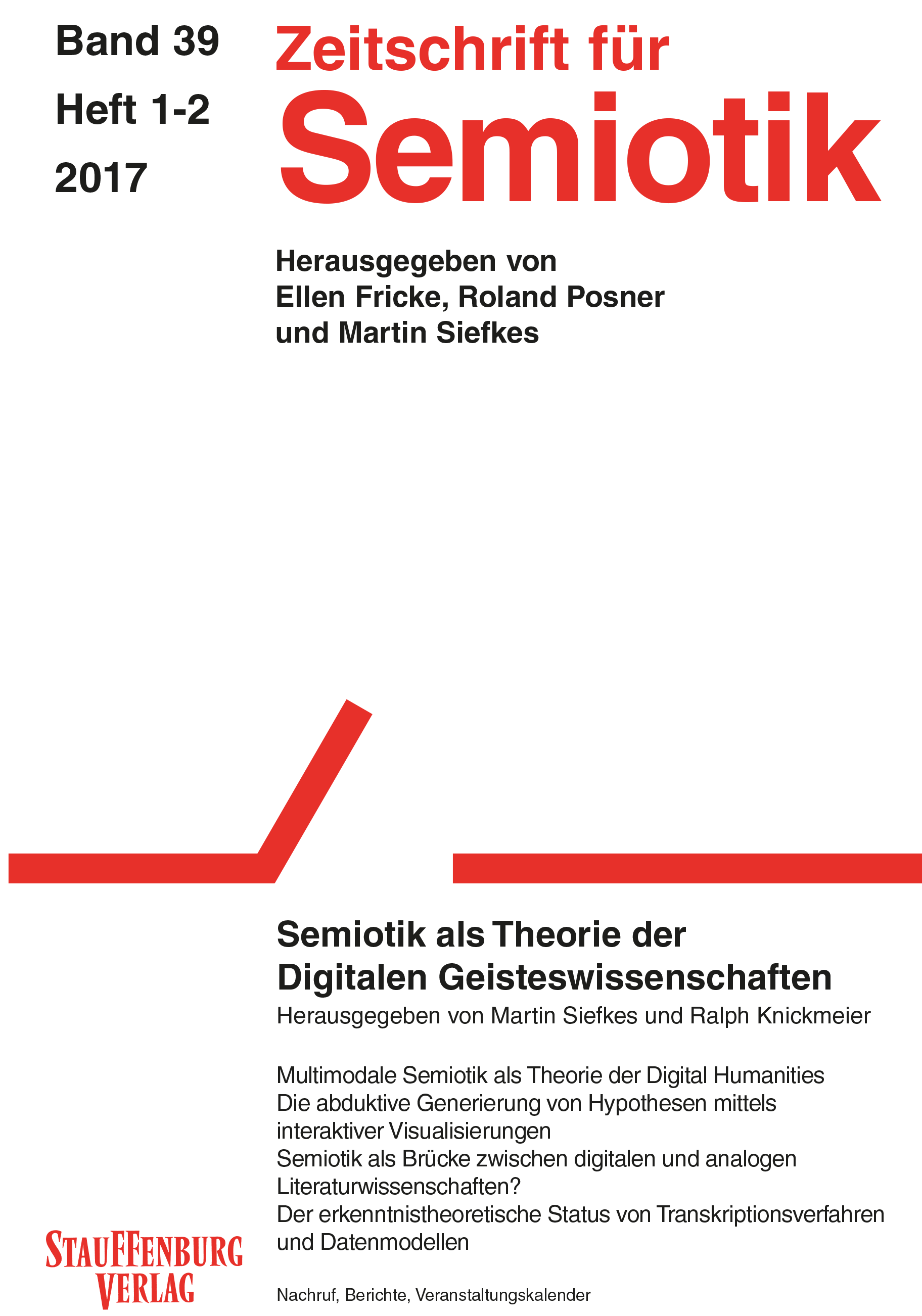Diagrammatische Denkwerkzeuge in den Digital Humanities
Ansatz zur zeichentheoretischen Grundlegung
DOI:
https://doi.org/10.14464/zsem.v39i1-2.676Keywords:
diagram, thinking tool, abduction, diagrammatic reasoning, visualization, timeline, synchronoptic view, cognitive map, artificial intelligence, Augmenting Humanist IntellectAbstract
The article uses examples of synchronoptic views of timelines, diagrams of historical narratives about complex interrelations and cognitive maps to show how the generation of an explanatory hypotheses by abductive reasoning supported by means of interactive information visualization tools and, more generally, how the application of such diagrammatic thinking tools in order to create new insights in the Humanities can be explained semiotically. Thus, the article demonstrates how semiotics can make a theoretical contribution to the Digital Humanities, both on its Computer Science side as well as on its Humanities side. Formal modeling as the core of the Digital Humanities is a necessary precondition for the automatic processing of humanistic research activities. This concerns both the algorithmic and the technical level of the informational implementation as well as the computational level of the diagrammatic representation. A semiotic explanation can concentrate on the computational level, without having to go into the algorithmic and technical details of the implementation. A semiotic theory of Digital Humanities may therefore focus on the analysis of diagrammatic thinking tools to support and extend humanities research in terms of an augmenting human(ist) intellect approach.
Downloads
Published
Issue
Section
License
Copyright (c) 2024 Ingo Frank

This work is licensed under a Creative Commons Attribution 4.0 International License.
Copyright for articles published in this journal is retained by the authors. The content is published under a Creative Commons Licence Attribution 4.0 International (CC BY 4.0). This permits use, distribution, and reproduction in any medium, provided the original work is properly cited, and is otherwise in compliance with the licence.


